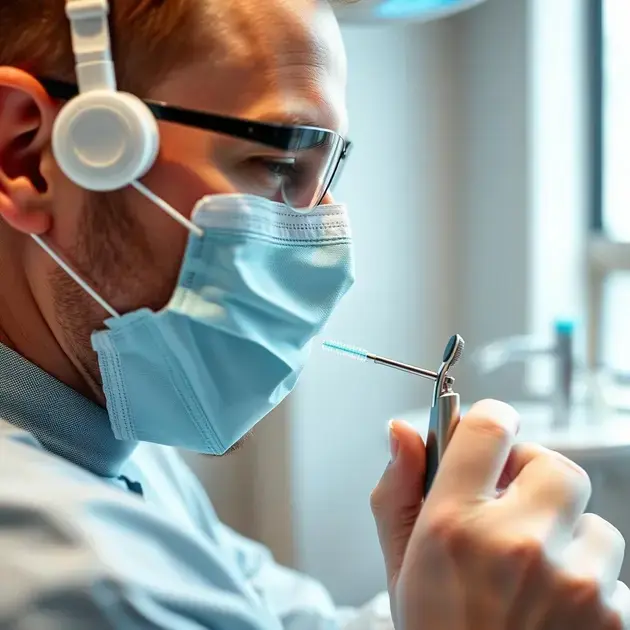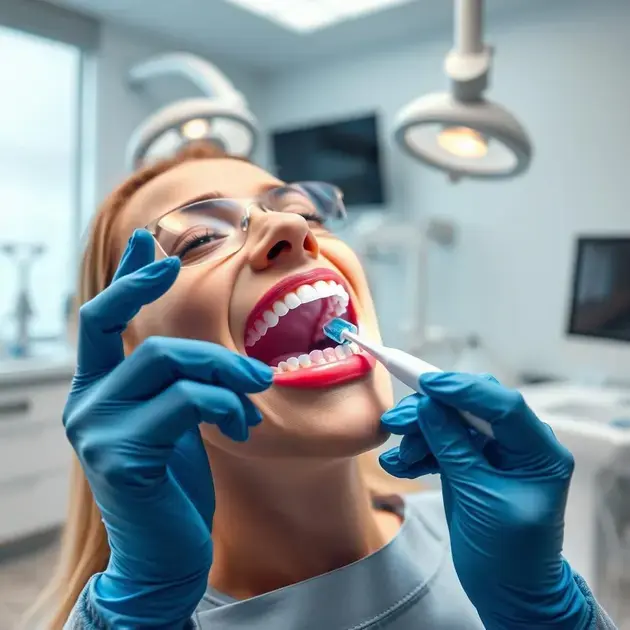Maintaining oral hygiene is paramount, and knowing how to effectively remove plaque from teeth is essential in preventing dental issues such as cavities and gum disease. Plaque, a sticky film of bacteria that forms on teeth, can harden into tartar if not removed regularly. This, in turn, can lead to more severe dental problems. Thus, implementing effective plaque removal techniques is crucial for maintaining healthy teeth and gums.
Recent studies highlight the importance of combining mechanical and chemical methods to combat plaque build-up effectively. Techniques such as brushing twice daily with fluoride toothpaste, flossing regularly, and using an antibacterial mouthwash are foundational. Additionally, the advancements in electric toothbrushes have made them more effective at removing plaque compared to manual brushing, reinforcing the importance of using the right tools for dental care.

Effective Plaque Removal Techniques at Home
Dental plaque is a sticky film that forms on your teeth and can lead to cavities and gum disease if not removed regularly. To effectively remove plaque at home, a combination of mechanical and chemical methods can provide optimal results for maintaining oral hygiene.
An essential mechanical method for plaque removal is brushing your teeth at least twice a day with a fluoride toothpaste. Use a soft-bristled toothbrush and gentle circular motions to clean all tooth surfaces, including the gumline and back teeth.
In addition to brushing, incorporating flossing into your daily routine is crucial for removing plaque from areas that a toothbrush can’t reach, such as between the teeth. Make sure to gently glide the floss up and down each side of the tooth to dislodge plaque and food particles.
For a more thorough clean, consider using an antimicrobial mouthwash that can help reduce plaque buildup and kill bacteria in the mouth. Swish the mouthwash for the recommended amount of time, usually around 30 seconds, to ensure all areas are covered.
To enhance your plaque removal routine, you can also use plaque-disclosing tablets or solutions occasionally to visualize areas where plaque accumulates the most. This can help you target those spots more effectively during brushing and flossing.
Combining Mechanical and Chemical Methods for Optimal Results
By combining mechanical and chemical methods, you can achieve optimal results in removing plaque and maintaining oral health. Mechanical methods, such as brushing and flossing, physically remove plaque from the tooth surfaces and gumline.
When choosing a toothbrush, consider using an electric toothbrush for more efficient plaque removal. Electric toothbrushes are designed to provide consistent and thorough cleaning through their oscillating or rotating bristle movements, making them a valuable tool in combating plaque buildup.
Incorporating a fluoride toothpaste with antimicrobial properties can enhance the chemical aspect of plaque removal. Fluoride helps strengthen tooth enamel, while antimicrobial agents like triclosan or essential oils can help reduce plaque formation and bacterial growth.
Regular dental cleanings and check-ups are also essential in combination with your at-home plaque removal routine. Professional cleanings can remove hardened plaque, known as tartar, that cannot be removed effectively with brushing and flossing alone.
By following a comprehensive approach that combines mechanical techniques with the right chemical products and professional dental care, you can achieve optimal results in plaque removal and maintain a healthy smile.
The Role of Electric Toothbrushes in Removing Plaque
Electric toothbrushes have become increasingly popular for their effectiveness in removing plaque and promoting better oral hygiene. These toothbrushes are powered by rechargeable batteries or electricity and offer several advantages over manual toothbrushes.
One of the key benefits of electric toothbrushes is their ability to provide consistent and controlled movements during brushing. The oscillating or rotating bristle heads can cover more surface area and reach areas that may be challenging to clean with a manual toothbrush.
Some electric toothbrush models also come with built-in timers or pressure sensors to help users brush for the recommended two minutes and avoid applying too much pressure on the teeth and gums. This can contribute to more effective plaque removal and prevent damage to the oral tissues.
Many electric toothbrushes feature different cleaning modes, such as daily cleaning, sensitive teeth, and gum care, allowing users to customize their brushing experience based on their oral health needs. These modes can help target specific areas of concern, such as plaque buildup or gum sensitivity.
When selecting an electric toothbrush, look for one that carries the American Dental Association (ADA) Seal of Acceptance to ensure its safety and effectiveness. Regularly replacing the brush heads as recommended by the manufacturer is also crucial for maintaining optimal plaque removal results and overall oral health.

Advanced Tools for Plaque Removal
When it comes to advanced tools for plaque removal, technology has significantly improved over the years. One innovative tool that has gained popularity is the electric toothbrush. These toothbrushes come with features such as oscillating bristles and pressure sensors to ensure effective plaque removal without damaging the gums. Additionally, water flossers are another advanced tool that helps remove plaque from hard-to-reach areas between teeth.
Another cutting-edge tool is the air flosser, which uses bursts of air and micro-droplets of water to clean between teeth and along the gum line. These tools can be a valuable addition to your oral hygiene routine and can help prevent plaque buildup when used correctly.
Ultrasonic plaque removal devices are also becoming more common in dental offices. These tools use high-frequency vibrations to break down plaque and tartar, providing a thorough cleaning experience. When combined with professional dental cleanings, these advanced tools can help maintain optimal oral health.
For at-home use, there are also handheld tartar and plaque removers that use ultrasonic technology to remove stubborn plaque. These devices are easy to use and can be a great complement to your regular brushing and flossing routine. Investing in advanced tools for plaque removal can make a significant difference in the health of your teeth and gums.
Overall, incorporating advanced tools into your oral care routine can enhance plaque removal and contribute to better overall dental health. Whether you opt for an electric toothbrush, water flosser, air flosser, or ultrasonic plaque remover, these tools can help you achieve a cleaner, healthier smile.
Innovative Approaches to Combat Plaque Buildup
When traditional methods are not enough, innovative approaches to combat plaque buildup can make a difference in maintaining good oral health. One such approach is oil pulling, an ancient Ayurvedic practice that involves swishing oil around in the mouth to remove bacteria and reduce plaque. Coconut oil, sesame oil, and olive oil are commonly used for oil pulling, providing natural antimicrobial properties.
Another innovative approach is the use of probiotics for oral health. Probiotic supplements or foods can help balance the oral microbiome, reducing harmful bacteria that contribute to plaque buildup. By promoting a healthy bacterial balance in the mouth, probiotics can support overall oral health and reduce the risk of gum disease.
Enzyme-based mouthwashes and toothpaste are also emerging as effective tools to combat plaque buildup. These products contain enzymes that help break down plaque and prevent its accumulation on teeth and gums. By incorporating enzyme-based oral care products into your routine, you can target plaque at its source and maintain a cleaner, healthier mouth.
In-office treatments such as dental sealants and fluoride varnishes offer additional innovative approaches to combat plaque buildup. Sealants create a protective barrier on the teeth, preventing plaque from adhering to the enamel. Fluoride varnishes help strengthen tooth enamel and make it more resistant to acid attacks from plaque bacteria.
By exploring innovative approaches to combat plaque buildup, you can tailor your oral care routine to suit your specific needs and achieve optimal dental health. Whether through oil pulling, probiotics, enzyme-based products, or in-office treatments, these approaches offer new strategies to keep plaque at bay and maintain a healthy smile.
Maximizing Plaque Removal with Professional Techniques
When it comes to maximizing plaque removal, professional techniques employed by dental hygienists and dentists can provide thorough cleaning and prevention of plaque buildup. One key professional technique is scaling and root planing, a deep cleaning procedure that removes tartar and plaque from below the gum line. This process helps prevent gum disease and restores gum health.
Professional teeth cleanings, typically performed every six months, are essential for maximizing plaque removal and maintaining oral health. Dental professionals use specialized tools and techniques to clean hard-to-reach areas, ensuring that plaque and tartar are effectively removed to prevent cavities and gum disease.
Fluoride treatments administered by dental professionals are another effective way to maximize plaque removal. Fluoride helps strengthen tooth enamel, making it more resistant to acid attacks from plaque bacteria. By receiving fluoride treatments regularly, you can enhance the protection of your teeth and prevent cavities.
Dental professionals also utilize advanced technologies such as laser therapy for plaque removal. Laser technology can target and remove plaque and bacteria with precision, reducing the risk of gum disease and promoting healthier gums. Laser therapy is a minimally invasive and effective technique for maximizing plaque removal.
By incorporating professional techniques into your oral care routine, you can ensure thorough plaque removal and maintain optimal dental health. Regular professional cleanings, scaling and root planing, fluoride treatments, and laser therapy are all valuable tools in the fight against plaque buildup and the promotion of a healthy smile.
Conclusion
Advanced tools for plaque removal, such as electric toothbrushes, water flossers, air flossers, and ultrasonic plaque removers, have revolutionized oral care by providing efficient ways to combat plaque buildup. These tools offer features like oscillating bristles, pressure sensors, and high-frequency vibrations, ensuring effective plaque removal without harming the gums. By incorporating these advanced tools into your oral hygiene routine, you can achieve a cleaner and healthier smile while preventing plaque accumulation.
Innovative approaches like oil pulling, probiotics, and enzyme-based oral care products offer additional strategies to combat plaque buildup and maintain good oral health. Oil pulling with natural oils like coconut, sesame, or olive oil can help reduce bacteria and plaque, while probiotics promote a healthy oral microbiome. Enzyme-based products break down plaque, preventing its accumulation on teeth and gums, contributing to a cleaner and healthier mouth.
Maximizing plaque removal through professional techniques like scaling and root planing, regular teeth cleanings, fluoride treatments, and laser therapy can ensure thorough cleaning and prevention of plaque buildup. These professional interventions target plaque with precision, strengthen tooth enamel, and reduce the risk of gum disease, promoting optimal dental health and a radiant smile. By combining advanced tools, innovative approaches, and professional techniques, you can tailor your oral care routine to meet your specific needs and achieve long-lasting oral health.
